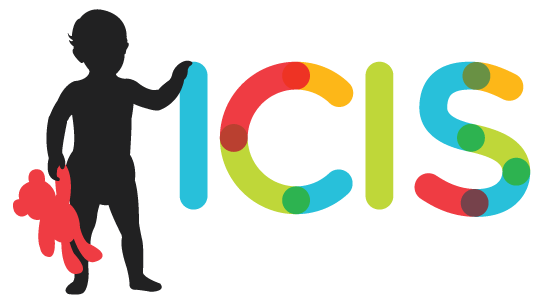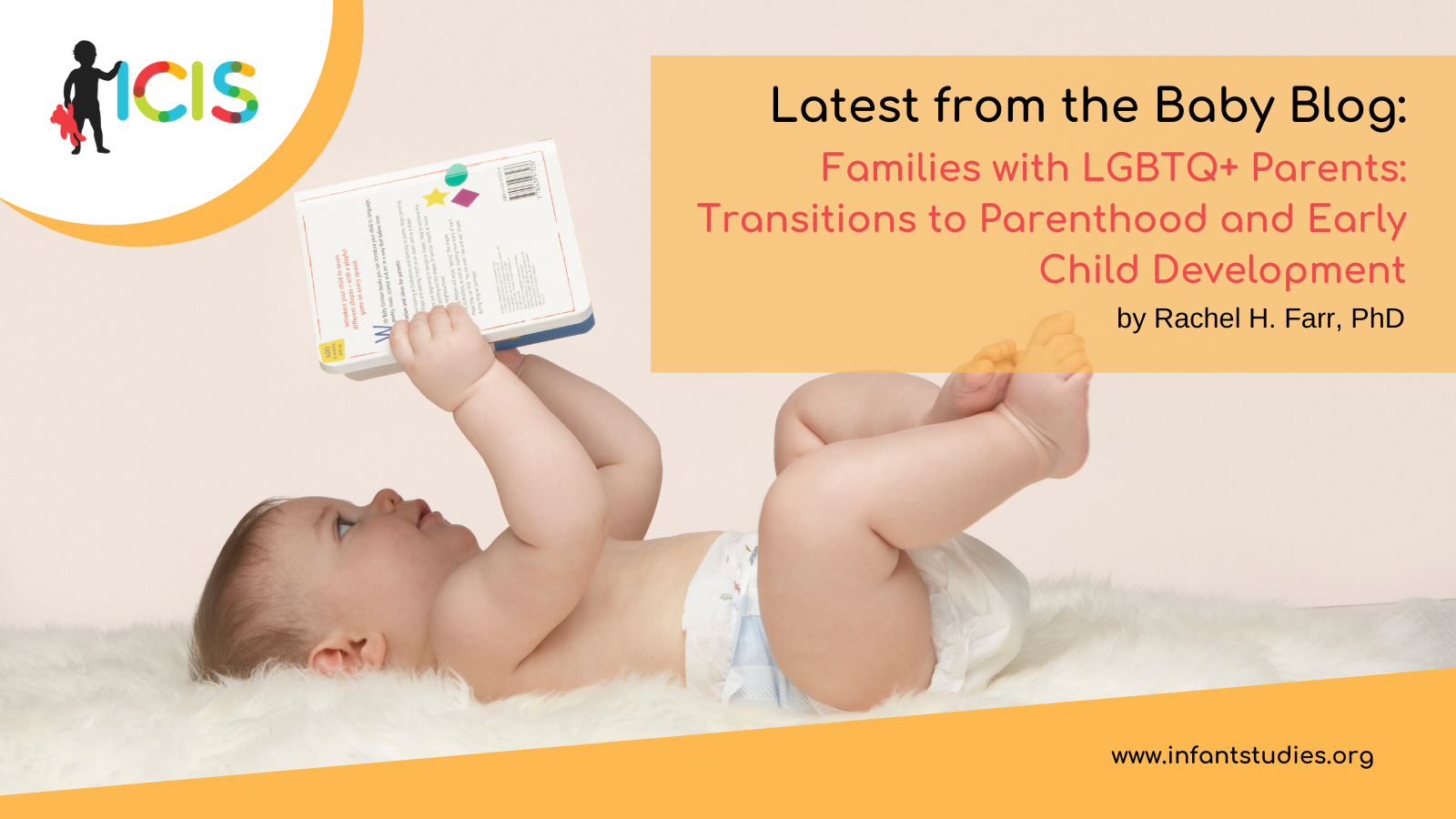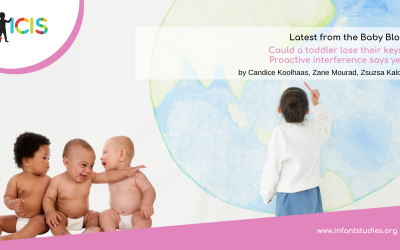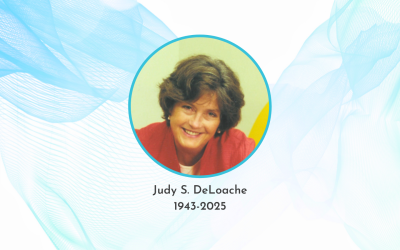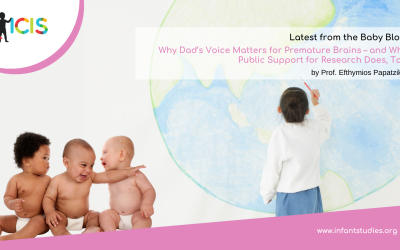by Rachel H. Farr, PhD
As LGBTQ+ parenthood (via varied pathways) increases worldwide, parents and providers benefit from information about parenthood and early child development1,2,3,4,5:
- What can LGBTQ+ parents and their partners expect during the transition to parenthood?
- How do young children (0-4 years) with LGBTQ+ parents develop?
Transition to LGBTQ+ Parenthood
Parenthood brings joy, stress, and unique dynamics for LGBTQ+ parents1,6. Whereas m any older LGBTQ+ parents had children within contexts of former cis-het identities and/or relationships; younger LGBTQ+ people often do so within contexts of LGBTQ+ identities and relationships3,5,7. Each pathway to parenthood available to LGBTQ+ families (including adoption, foster care, reproductive sex, coparenting, assisted reproductive technologies [ART]) involves numerous emotionally-laden decisions as well as barriers from both stigma and cost. Individual preferences, differential access to reproductive pathways, and distinct reproductive capacities are some of these barriers, and obstacles to achieving parenthood are often linked with socioeconomic status and additional minoritized identities1,5,8,9,10,11. For example, LGBTQ+ partners who have uteruses and ovaries and pursue donor insemination must decide who will carry, who will provide the egg, as well as who will be the sperm donor and what their role will be4,8. Further complicating these decisions are reproductive health challenges, relationship dynamics, and practical constraints; for example, BIPOC donors are sparse.
Parenthood involves immense individual, partner relationship, and overall family change5. All parents of newborns and young children sleep less and have less time for their partners4,12. Relationship quality, intimacy, love, and satisfaction typically decline1,13; conflict, stress, and ambivalence increase4,5. New parents experience increased depression, anxiety, and stress4,12. This is especially true for parents with babies in the NICU, a risk that is elevated with the use of ART14. Some changes involve parents’ jobs and careers15, including changes in paid employment or work hours, or in living arrangements regarding childcare and new parenting4.
Family Ties
Children bond with both parents in two-parent LGBTQ+ families. Lack of, or discrepancies in, biological relatedness between children and their parents, however, can create hurdles or invisibility4. Legal invisibility happens when only one parent can be a legal parent due to biological ties1,16. Social invisibility occurs when biological relatedness connects to parents’ feelings of legitimacy, which can in turn fuel partner jealousy. Anxiety is common among LGBTQ+ partners without biological ties to children, or for whom these ties differ4,8. These challenges relate to partner relationships but are not unique to LGBTQ+ parents.
Who Does What?
All families must decide how to divide family labor, and partners satisfied with divisions of labor enjoy greater relationship quality and well-being4,19. Typically, gender norms impact heterosexual partners’ divisions; women do more housework and childcare, men work more in paid employment17. Early on, biologically related parents often perform more childcare5,18. In contrast to heterosexual partners, LGBTQ+ partners frequently share family labor evenly5. Preferences and practical considerations, like hours in paid employment, are influential5,18,19.
Discrimination and Stigma
Across the transition to parenthood (and beyond), LGBTQ+ parents experience discrimination and stigma from professionals, interpersonal interactions, institutional policies or practices, and state or federal laws2,9,20. Stigma negatively impacts LGBTQ+ parent health4,5. LGBTQ+ prospective parents report discrimination based on religious beliefs; unfair treatment may result from implicit bias (i.e., unconscious preferences)4,5,21. LGBTQ+ parents worry about stigma from pediatricians, childcare providers, lawyers, religious institutions, family, and friends1,4,5,8,9,10,20,22. Because “mothers” are viewed as natural or “default” parents, LGBTQ+ parents not perceived as “real” are particularly vulnerable to discrimination1,20,23.
Social Support
Social network and family relationship changes are common during the parenthood transition, yet social support is important for all new parents4,5. LGBTQ+ parents are often less close, on average, to families of origin than cis-het parents5,24. Some LGBTQ+ adults become closer to families of origin after having a biologically related child4. Many LGBTQ+ parents want social support from other LGBTQ+ parents or those who have pursued similar pathways (e.g., other adoptive parents)22. Social support – from partners, chosen family (i.e., close relationships not based on biological ties), and community – is a strength for LGBTQ+ people that buffers negative health impacts across the parenthood transition4,5.
How Young Children with LGBTQ+ Parents Develop
Children with LGBTQ+ parents experience healthy development24,25. Research has focused on children’s early development—0-4 years—particularly in regard to attachment, parent-child relationship quality, gender development, cognitive development, and well-being2,24. For instance, adopted children with gay fathers in the UK showed higher secure-autonomous attachment than those with heterosexual parents26. Few differences in gender typicality to peers with cis-het parents exist, although some findings indicate greater flexibility in gendered play among toddlers and preschoolers with LGBTQ+ parents5,24,27,28. Young children with LGBTQ+ parents show comparable or better adjustment to peers with cis-het parents. In the U.S., Goldberg and Smith found that externalizing and internalizing behaviors were similar among 2-year-olds adopted by lesbian, gay, and heterosexual parents.29 My team and I found no differences by parental sexual orientation in behavioral adjustment among 3-year-olds adopted as infants30. In Australia, children (median age: 4 years) with same-sex parents showed better general health and behavioral adjustment than population norms31. Same-sex parents were more likely to breast/chest feed and immunize children31. In a series of studies in Italy, 3- to 9-year-olds with lesbian and gay parents showed internalizing and externalizing problems like the typical population, and 3- to 11-year-olds with same-gender parents had fewer psychological problems than those with heterosexual parents23,32. In another study, child well-being, emotional regulation, and peer relationships were indistinguishable by parental sexual orientation among toddlers with lesbian, gay, and heterosexual parents13. Similarly, in the UK, 3- to 9-year-olds with gay fathers had few behavior problems and showed no differences from those with lesbian mothers33.
Family processes matter more to early child outcomes than family structure. We found that parenting stress, parenting approaches, and partner relationship quality among lesbian, gay, and heterosexual parents were associated with preschoolers’ behavioral adjustment; supportive co-parents had well-adjusted children, regardless of parental sexual orientation17,30. Goldberg and Smith found that less relationship conflict among lesbian, gay, and heterosexual partners was associated with fewer internalizing problems among their 2-year-olds29. Among parents, lower depression and more adoption preparation were associated with fewer internalizing and externalizing child behaviors29.
Despite overall positive outcomes for children of LGBTQ+ parents, stigma and discrimination nevertheless impact LGBTQ+ parenting and child outcomes2,20. In Crouch and team’s Australian study, experiencing stigma was linked with negative outcomes (e.g., less physical activity, poorer mental health, and family cohesion) among children of same sex parents31. Among Italian gay fathers with 3- to 10-year-old children, homophobic microaggressions were linked with lower parental sensitivity33. More behavior problems among 3- to 9-year-olds were reported by LG parents in the UK and Italy who had experienced more stigma23,34. In sum, early child development in LGBTQ+ parent families appear linked with parent adjustment, family relationships, and stigma experiences, rather than with parents’ sexual or gender identity.
Conclusion
Many LGBTQ+ people are or want to be parents3,5,35. Knowledge about the transition to LGBTQ+ parenthood is key to cultivate strong families. Understanding contributors to positive child development will support LGBTQ+ parents to provide their young children the best foundation for a happy and healthy life.
Practice Pointers
- Understand different parenthood pathways and associated strengths/challenges.
- Encourage partners to discuss parenting and relationship expectations.
- Understand relevant laws and policies.
- Dismantle discrimination wherever possible; support LGBTQ+ families to cope.
- Consider intersectionality36; account for multiple identities (racial, cultural, class, etc.).
- Encourage partners to develop affirming social support networks.
- Support self- and relationship-care activities to reduce stress.
Opportunity to Contribute to LGBTQ+ Family Research
If you or your family is interested in participating in strengths-based, queer-positive research, please consider our Queer Parent and Adolescent Lives (Q-PAL) project in the Families, Adoption, and Diversity (FAD) Lab at the University of Kentucky.
References
1Cao, H., Mills-Koonce, W. R., Wood, C., & Fine, M. A. (2016). Identity transformation during the transition to parenthood among same-sex couples: An ecological, stress-strategy-adaptation perspective. Journal of Family Theory & Review, 8(1), 30-59. https://doi.org/10.1111/jftr.12124
2Patterson, C. J., Farr, R. H., & Goldberg, A. E. (2021, October). LGBTQ+ parents and their children. National Council on Family Relations: Policy Brief, 6(3), 1-8. https://www.ncfr.org/policy/research-and-policy-briefs/lgbtq-parents-and-their-children
3Tornello, S. L., Riskind, R. G., & Babíc, A. (2019). Transgender and gender non-binary parents’ pathways to parenthood. Psychology of Sexual Orientation & Gender Diversity, 6(2), 232-241. https://doi.org/10.1037/sgd0000323.
4Goldberg, A. E., & Allen, K. R. (Eds.) (2020). LGBTQ-parent families: Innovations in research and implications for practice (2nd ed.). Springer.
5National Academies of Science, Engineering, and Medicine (NASEM). (2020). Understanding the well-being of LGBTQ+ populations. The National Academies Press.
6Rubio, B., Vecho, O., Gross, M., van Rijn-van Gelderen, L., Bos, H., Ellis-Davies, K. et al. (2020). Transition to parenthood and quality of parenting among gay, lesbian and heterosexual couples who conceived through assisted reproduction. Journal of Family Studies, 26(3), 422-440. https://doi.org/10.1080/13229400.2017.1413005
7Tornello, S. L., Sonnenberg, B., & Patterson, C. J. (2015). Division of labor among gay fathers: Associations with parent, couple, and child adjustment. Journal of Psychology of Sexual Orientation and Gender Diversity, 2(4), 365-375. https://doi.org/10.1037/sgd0000109
8Carpenter, E., & Niesen, R. (2021). ‘It’s just constantly having to make a ton of decisions that other people take for granted’: Pregnancy and parenting desires for queer cisgender women and non-binary individuals assigned female at birth. Journal of GLBT Family Studies, 17(2), 87-101. https://doi.org/10.1080/1550428X.2020.1773367
9Levitt, H. M., Schuyler, S. W., Chickerella, R., Elber, A., White, L., Troeger, R. L. et al. (2020). How discrimination in adoptive, foster, and medical systems harms LGBTQ+ families: Research on the experiences of prospective parents. Journal of Gay & Lesbian Social Services, 32(3), 261-282. https://doi.org/10.1080/10538720.2020.1728461
10Park, N., Schmitz, R. M., & Slauson-Blevins, K. (2020). “It takes a lot of planning”: Sexual minority young adult perceptions of gay and lesbian parenthood. Journal of Family Issues, 41(4), 1785-1809. https://doi.org/10.1177/0192513X20925508
11Tornello, S. L., & Bos, H. M. W. (2017). Parenting intentions among transgender individuals. LGBT Health, 4(2), 115-120. https://doi.org/10.1089/lgbt.2016.0153
12Saxbe, D., Rossin-Slater, M., & Goldenberg, D. (2018). The transition to parenthood as a critical window for adult health. American Psychologist, 73(9), 1190-1200. https://doi.org/10.1037/amp0000376
13Baiocco, R., Santamaria, F., Loverno, S., Fontanesi, L., Baumgartner, E., Laghi, F. et al. (2015). Lesbian mother families and gay father families in Italy: Family functioning, dyadic satisfaction, and child well-being. Sexuality Research and Social Policy, 12(September), 202-212. https://doi.org/10.1007/s13178-015-0185-x
14Janvier, A., Lantos, J., Aschner, J., Barrington, K., Batton, B., Batton, D. et al. (2016). Stronger and more vulnerable: A balanced view of the impacts of the NICU experience on parents. Pediatrics, 138(3), e20160655. https://doi.org/10.1542/peds.2016-0655
15Simon, K. A., Tornello, S. L., & Bos, H. M. W. (2019). Sexual minority women and parenthood: Perceptions of friendship among childfree and new parents. Journal of Lesbian Studies, 23(4), 476-489. https://doi.org/10.1080/10894160.2019.1634994
16Farr, R. H., & Goldberg, A. E. (2018). Sexual orientation, gender identity, and adoption law. Family Court Review, 56(3), 374-383. https://doi.org/10.1111/fcre.12354
17Farr, R. H., & Patterson, C. J. (2013). Coparenting among lesbian, gay, and heterosexual couples: Associations with adopted children’s outcomes. Child Development, 84(4), 1226-1240. https://doi.org/10.1111/cdev.12046
19Farr, R. H., Bruun, S. T., & Patterson, C. J. (2019). Longitudinal associations between coparenting and child adjustment among lesbian, gay, and heterosexual adoptive parent families. Developmental Psychology, 55(12), 2547-2560. https://doi.org/10.1037/dev0000828
19Tornello, S. L. (2020). Division of labor among transgender and gender non-binary parents: Associations with individual, couple, and children’s behavioral outcomes. Frontiers in Psychology, 11. https://doi.org/10.3389/fpsyg.2020.00015
20Perrin, E. C., Pinderhughes, E. E., Mattern, K., Hurley, S. M., & Newman, R. A. (2016). Experiences of children with gay fathers. Clinical Pediatrics, 55(14), 1305-1317. https://doi.org/10.1177/0009922816632346
21Sabin, J. A., Riskind, R. G., & Nosek, B. A. (2015). Health care providers’ implicit and explicit attitudes toward lesbian women and gay men. American Journal of Public Health, 105(9), 1831-1841. https://doi.org/10.2105/AJPH.2015.302631
22Simon, K. A., Tornello, S. L., Farr, R. H., & Bos, H. M. W. (2018). Envisioning future parenthood among bisexual, lesbian, and heterosexual women. Psychology of Sexual Orientation and Gender Diversity, 5(2), 253-259. https://doi.org/10.1037/sgd0000267
23Carone, N., Lingiardi, V., Chirumbolo, A., & Baiocco, R. (2018). Italian gay father families formed by surrogacy: Parenting, stigmatization, and children’s psychological adjustment. Developmental Psychology, 54(10), 1904-1916. https://doi.org/10.1037/dev0000571
24American Psychological Association (APA) (2020). Resolution on sexual orientation, gender identity (SOGI), parents, and their children. https://www.apa.org/pi/lgbt/resources/policy/sexual-orientation
25Farr, R. H., Tornello, S. L., & Rostosky, S. R. (2022). How do LGBTQ+ parents raise well- adjusted, resilient, and thriving children? Current Directions in Psychological Science, 31(6), 526-535. https://doi.org/10.1177/09637214221121295
26McConnachie, A. L., Ayed, N., Jadva, V., Lamb, M., Tasker, F., & Golombok, S. (2020). Father-child attachment in adoptive gay father families. Attachment & Human Development, 22(1), 110-123. https://doi.org/10.1080/14616734.2019.1589067
27Bruun, S. T., & Farr, R. H. (2021). Longitudinal gender presentation and associated outcomes among adopted children with lesbian, gay, and heterosexual parents. Journal of GLBT Family Studies, 17(3), 231-250. https://doi.org/10.1080/1550428X.2020.1802382
28Carone, N., Lingiardi, V., Tanzilli, A., Bos, H. M. W., & Baiocco, R. (2020). Gender development in children with gay, lesbian, and heterosexual parents: Associations with family type and child gender. Journal of Developmental & Behavioral Pediatrics, 41(1), 38-47. https://doi.org/10.1097/DBP.0000000000000726
29Goldberg, A. E., & Smith, J. Z. (2013). Predictors of psychological adjustment in early placed adopted children with lesbian, gay, and heterosexual parents. Journal of Family Psychology, 27(3), 431-442. https://doi.org/10.1037/a0032911
30Farr, R. H., Forssell, S. L., & Patterson, C. L. (2010). Parenting and child development in adoptive families: Does parental sexual orientation matter? Applied Developmental Science, 14(3), 164-178. https://doi.org/10.1080/10888691.2010.500958
31Crouch, S. R., Waters, E., McNair, R., Power, J., & Davis, E. (2014). Parent-reported measures of child health and wellbeing in same-sex parent families: A cross-sectional survey. BMC Public Health, 14, 635-646. https://doi.org/10.1186/1471-2458-14-635
32Baiocco, R., Carone, N., Loverno, S., & Lingiardi, V. (2018). Same-sex and different-sex parent families in Italy: Is parents’ sexual orientation associated with child health outcomes and parental dimensions? Journal of Developmental & Behavioral Pediatrics, 39(7), 555-563. https://doi.org/10.1097/DBP.0000000000000583
33Carone, N., Lingiardi, V., Baiocco, R., & Barone, L. (2021). Sensitivity and rough-and-tumble play in gay and heterosexual single-father families through surrogacy: The role of microaggressions and fathers’ rumination. Psychology of Men & Masculinities, 22(3), 476-487. https://doi.org/10.1037/men0000267
34Golombok, S., Blake, L., Slutsky, J., Raffanello, E., Roman, G. D., & Ehrhardt, A. (2018). Parenting and the adjustment of children born to gay fathers through surrogacy. Child Development, 89(4), 1223-1233. https://doi.org/10.1111/cdev.12728
35Tasker, F., & Gato, J. (2020). Gender identity and future thinking about parenthood: A qualitative analysis of focus group data with transgender and non-binary people in the United Kingdom. Frontiers in Psychology, 11, 865. https://doi.org/10.3389/fpsyg.2020.00865
36Crenshaw, K. (1989). Demarginalizing the intersection of race and sex: A Black feminist critique of antidiscrimination doctrine, feminist theory and antiracist politics. University of Chicago Legal Forum. https://chicagounbound.uchicago.edu/uclf/vol1989/iss1/8
About the Author

Dr. Rachel H. Farr
University of Kentucky (UK)
Dr. Rachel H. Farr is an Associate Professor of Psychology at the University of Kentucky (UK). She received her PhD in Developmental and Community Psychology from the University of Virginia and was a postdoctoral scholar at the University of Massachusetts Amherst. Farr’s research focuses on diverse families, particularly those with lesbian, gay, bisexual, transgender, and queer (LGBTQ+) parents and formed through adoption. For over 15 years, she has conducted a large longitudinal study about how parental sexual orientation relates to child, parent, and family outcomes among diverse adoptive families across the United States. Farr also has interest in how issues of race (e.g., transracial adoption), gender, and birth family contact are relevant in adoptive families. With support from the William T. Grant Foundation, Farr is currently examining the lived experiences of racially and socioeconomically diverse adolescents with LGBTQ+ parents, particularly as related to identity, discrimination, coping, peer and family relationships, and community supports. With funding from UK’s Center for Health Equity Transformation (CHET), Farr is working with colleagues to explore the support experiences of LGBTQ+ parents who have had an infant in the NICU. Her work has been published in top-tier developmental psychology journals, such as Child Development and Developmental Psychology, and has garnered national media attention (e.g., the New York Times, Huffington Post, Washington Post, and National Public Radio). Farr’s findings are relevant to policy, practice, and law surrounding ongoing controversy about LGBTQ+ parenting and adoption; they have been cited in numerous amicus briefs for U.S. Supreme Court cases. Farr serves on her local county school’s LGBTQ+ advisory committee and in multiple leadership roles in professional organizations and at UK, especially regarding diversity and inclusion efforts.
